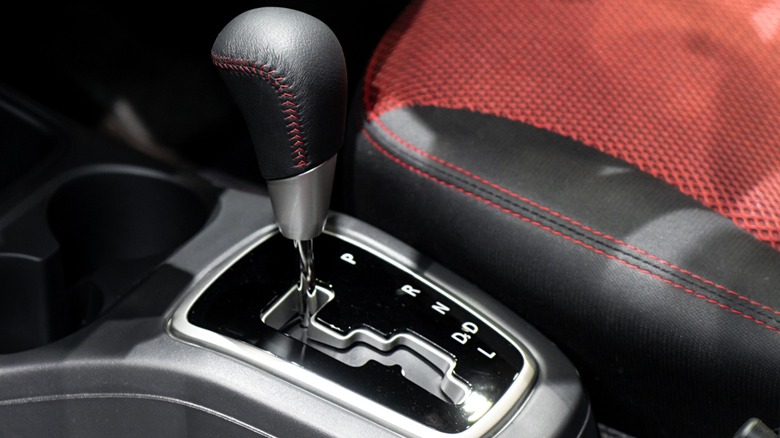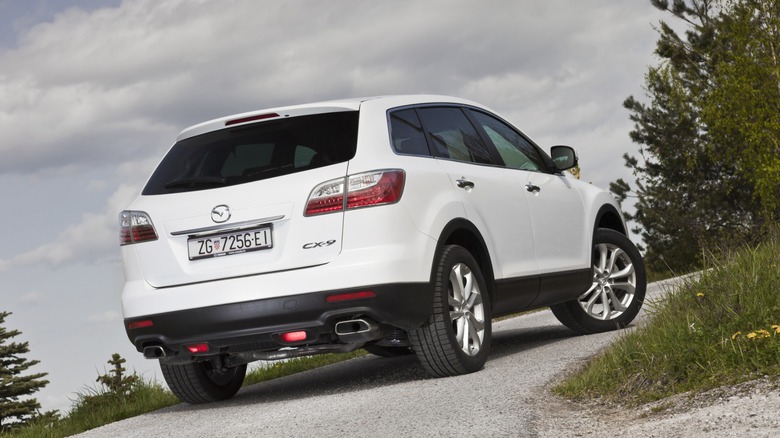Here Is When And Why Your Should Use The 'L' On Your Car's Gear Shifter
Engineers and automotive designers have done their best to make sure the complicated machinery we call cars are easy to drive and understand — especially the parts that are important to our driving experience. Which, unfortunately, includes, perhaps, the most complicated component of a car: the transmission. Their solution is to use (in most cars) single characters to designate what gear you would like to put your car's transmission in.
Of course, you wouldn't even get a driver's license if you didn't know that "D" is drive, "R" is reverse, "P" is park, and so on and so forth. However, there are letters on some automatic or CVT cars' gear shifters that aren't as popular — and frankly, aren't as useful to the average driver. One of those is "L," a gear not consistent across automatic cars. You may or may not find it, depending on the brand and year of production. Some manufacturers use a "B" or just represent the same idea in low numbers.
In short, "L" means "low gear," and it forces your car to move at a lower gear ratio, meaning the engine turns more for each rotation of the wheel. Essentially, you use more of the car's power to rotate the wheel powerfully (torque) instead of quickly (speed). It has its uses, which we'll get to below.
Why would you ever put your car's gear in 'L'?
The reason why "L" is also referred to as "B" in some cars (like the Prius) is because it can be used as a form of "braking" — engine braking, to be more specific. Imagine you're driving a car going down a steep hill. As you descend, you may notice that your car is picking up speed as gravity and momentum pushes it further down. To prevent going dangerously fast, you place your foot on the brake pedal, forcing the car to descend slowly. Doing this, however, will eat your brake pads faster, stress your brake rotors, and possibly contribute to brake fade. Instead, if you put your car in a lower gear, like "1," or "2," or "L," the reduced gear allowance will use resistance from the engine to slow the wheels down so that you won't need to ride the brakes as much.
Another advantage of lower gears is that they provide more torque than higher gears. So, it's not only good for going downhill but also going uphill, where your car needs to produce more power. If you left your car on "D" while going up a long stretch on a steep, hilly road, you might experience slipping or poor traction. Putting your car in a low gear would make the car's wheels spin slowly but more powerfully. This mode is especially useful if your car is towing something heavy, and you notice an overall lack of power.
If 'L' is so useful, why don't some cars have it?
In one way or the other, most automatic cars have selectable lower gears — it just manifests itself in different ways depending on the car. For instance, any automatic car with a "manual mode" and paddle shifters won't need "L" because you can select a low gear yourself and get the same effect. Some (older) cars don't use the letter "L" at all, they just use numbers. For instance, the 2005 to 2009 model of the Ford Mustang represents its lower gears using numbers 3, 2, 1 — with no "L".
Others (like the 2025 RAV4) use an "S" for "Sports" and a "+" and "-" instead of "L". It may seem counterintuitive at first, but this "Sports" mode is really just a manual mode that lets you increase or reduce your gears using the plus or minus signs, respectively. Some cars (such as the 2010 Toyota Corolla) use "L" instead of "1." Cars like that could have "3," "2," and "L," the last representing the lowest selectable gear.


